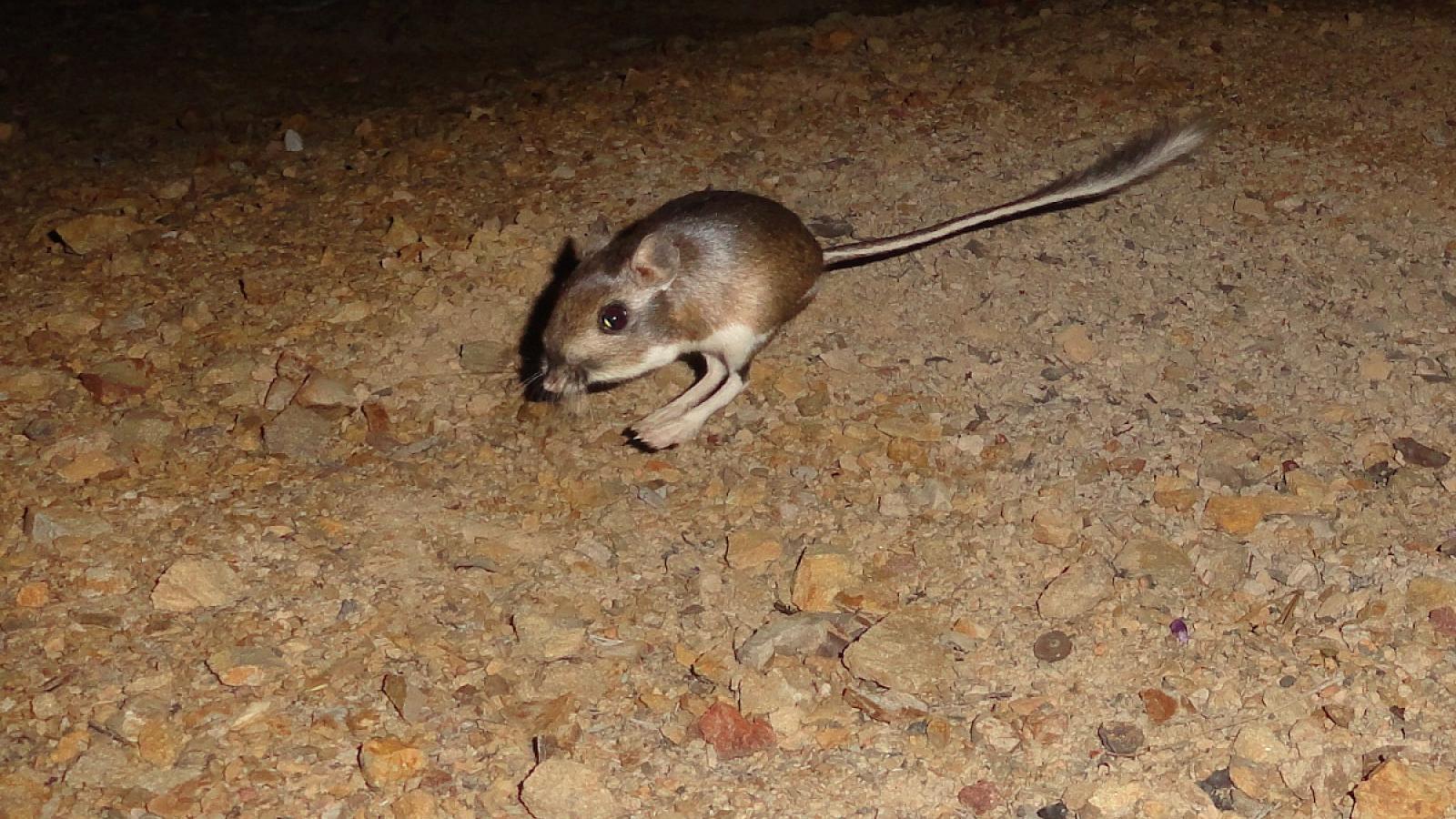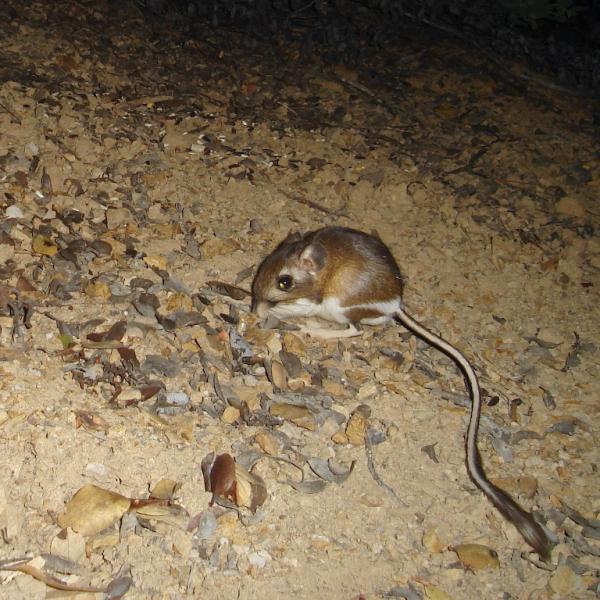Within the large expanse of the Sierra Azul Open Space preserve lives a small rodent, known as the Santa Cruz kangaroo rat (SCKR). Although small in stature, kangaroo rats are considered a “keystone” species, meaning its activities have great influence on the plants and animals that make up its habitat. As granivores that cache seeds in shallow burrows, SCKR have a mutualistic relationship with manzanita, and other plant species that make up their diet. Manzanitas are fire adapted plants and by burying manzanita seeds, SCKR protect them from getting too hot when a fire passes through. The smoke and ash from fire will promote germination of these cached seeds, leading to a new cohort of manzanitas.
Midpen was alerted of the discovery of kangaroo rats in Sierra Azul by an independent researcher in 2019. This critically imperiled subspecies is only currently known to exist in one other location, Henry Cowell Redwoods State Park in Felton, CA. The kangaroo rat is listed by the California Department of Fish and Wildlife (CDFW) as a critically imperiled subspecies, meaning that it is at risk of extirpation.
Midpen is embarking on a habitat assessment and series of botanical surveys within known SCKR habitat to better understand the habitat characteristics that supports the species. The results of these assessments and surveys will inform the creation of an SCKR Habitat and Population Monitoring Plan.



